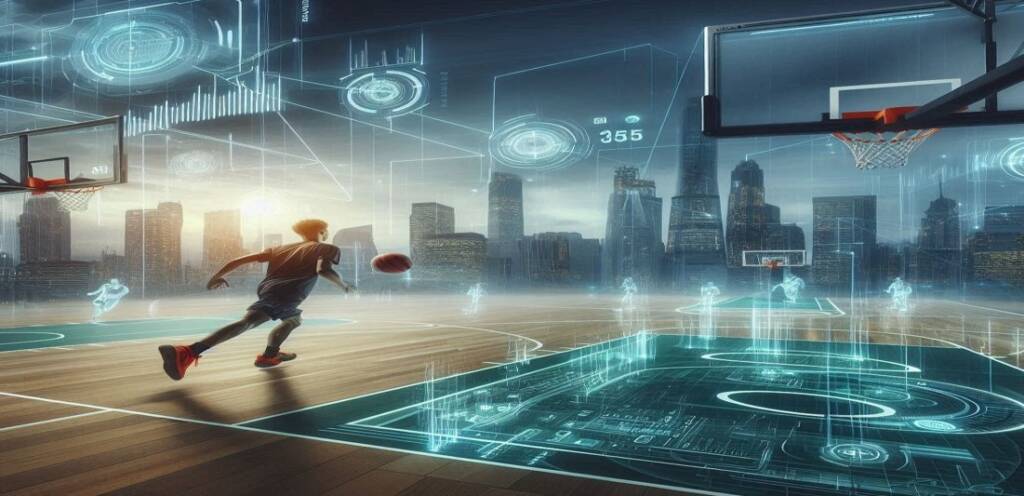Basketball has undergone a technological revolution in player training and improvement within the ever-changing world of sports. Smart basketballs are a significant development in this area. These balls have sensors built into them that give immediate feedback on a player’s handling skills, shooting accuracy, and overall performance. By introducing state-of-the-art technology into conventional sports training methods, it becomes possible to conduct many more types of analysis than ever before, which can be used to understand how best to improve players’ abilities and strategies.
History of Smart Basketball Technology
The history of smart basketball technology began with the idea of providing better feedback during practice but has since become an integral part of modern sports analytics. Initially, developers created simple sensors that could count dribbles or measure shot power. These systems eventually grew more complex over time until they were able to provide comprehensive statistics about every aspect of a player’s game, such as shot trajectory/spin rate, movement efficiency/court position awareness, etc.
Some important milestones along this path included adding Bluetooth connectivity so data could be analysed instantly through smartphones or tablets, thereby changing the way coaches interact with training information forever. The enhancements in data tracking also made watching games more engaging for fans, as basketball bets increased with deeper insights available, adding excitement to every play. However, the true breakthrough came when artificial intelligence (AI) was integrated with machine learning capabilities, allowing for predictive insights as well as personalised workout plans—making smart basketballs essential tools in any coach’s training kit bag!
Making Player Training Better
Every dribble and shot is now infused with state-of-the-art technology, thanks to smart basketballs. These basketballs, which have sensors and connectivity, provide instant feedback that allows for a more accurate and data-driven approach to training in basketball. This not only hones individual skills but also optimises team performance overall through detailed analytics.
Training Programmes and Drills
Training programmes that use smart basketballs consist of various drills designed to improve specific skills. For example, shooting accuracy drills keep track of the arc and depth of each shot so that players can receive feedback on how to adjust their techniques in real time. Dribbling drills measure force as well as speed, thus helping to develop ball-handling skills under different game scenarios. Such drills have been adopted by teams like the Toronto Raptors during their training sessions, leading to significant improvements among guards who recorded lower turnover rates besides shooting better percentages from the field.
Case Studies
Smart basketball integration has been highly successful within the University of Kentucky’s basketball programme since 2018. The wealth of information collected from these balls has enabled coaches to create personalised workouts for individuals based on weaknesses identified through data analysis. Another instance involves the Golden State Warriors, who used smart basketball technology in refining shooting techniques alongside decision-making processes among their players, hence contributing greatly towards their high three-point shooting accuracy rate. These examples show how much practical benefits can be gained by incorporating smart basketballs into player training regimes.
Challenges and Limitations
Smart basketballs have a lot to offer when it comes to training players and analysing their performance, but they also come with some challenges and limitations:
- Technology Dependency: Many people worry that young athletes will stop valuing basic skills and instincts if they rely too heavily on technology.
- Calibration Problems: It can be difficult to ensure sensors are accurate and stay calibrated over time, which means bad data could be collected which leads to misguided training strategies.
- Expensive: Implementing smart basketball technology is expensive. This means only the most well-funded organisations have access to them, as smaller teams or academies cannot afford it.
- Resistance to Technology: Some coaches or players may not want to use new training methods that are based on technology. They might prefer traditional ways over data-driven approaches.
- Privacy of Data: As more personal performance information is gathered, concerns about privacy arise.
These challenges need to be managed carefully so that we can get all the benefits from smart basketballs without losing what makes basketball training foundational.
Conclusion
Basketball has never been the same since smart balls came into play. Training has become more precise, while player development and team dynamics have gained new insights through these tools. The future holds great potential for the revolutionisation of competitive sports by smart basketball technology, even though there are still many obstacles in its way; this suggests an integration between traditional methods and technological advancements, where both work together towards achieving unprecedented athletic performances.
